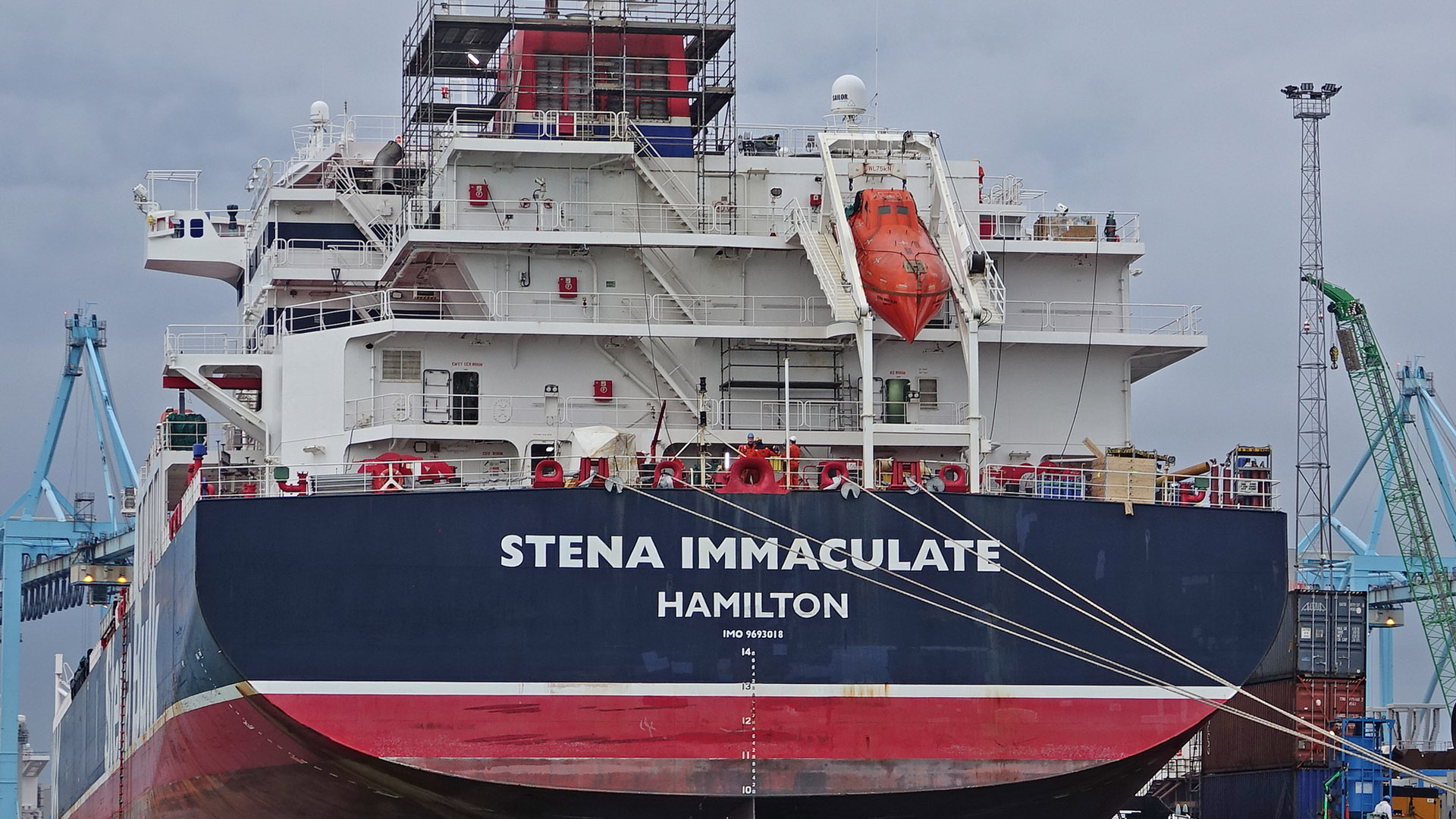
The UK government is scrambling to limit environmental damage after a cargo ship collided with an oil tanker in the North Sea just outside Yorkshire on March 10. The Portuguese vessel, MV Solong, ran into the US’s MV Stena Immaculate in foggy conditions. 36 crew members were rescued, and search and rescue efforts ceased for Mark Angelo Pernia, a 38-year-old Filipino crew member of the Solong who is assumed deceased. The captain of the Solong, a 59-year-old Russian national named Vladimir Motin, has been arrested on suspicion of gross negligence manslaughter, and has not yet entered a plea.
The US vessel was carrying 220,000 barrels of A-1 jet fuel headed for the port of Killingholme, Lincolnshire, for distribution to US military bases. Upon impact, one compartment of fuel was breached, and caused an explosion. The fires on the anchored Stena Immaculate were contained sooner than those on the Solong, which drifted in the days following the collision. While the contents of the Solong are largely unknown, some outlets have reported that 15 containers of sodium cyanide were aboard. However, in response, the ship’s owner clarified that there were four containers aboard that had previously held sodium cyanide, but that they were empty at the time of the collision. An investigation into the accident is underway, headed by the UK’s Marine Accident Investigation Branch (MAIB) in partnership with the US National Transportation Safety Board, US Coastguard, and Marine Safety Investigation Authority Portugal.
The UK government has assured the public that there is a low pollution risk, given that only one compartment of the Stena Immaculate was ruptured and much of the spilled fuel burned off or evaporated. Jet fuel is made up of smaller hydrocarbons than crude oil, making it easier for bacteria to break it down. While beachgoers and nearby resort owners are relieved that the oil spill appears to be relatively contained and jet fuel has not been spotted washing up along the coastline, the collision has created other environmental issues.
Aboard the Solong were millions of nurdles, small plastic pellets that can be molded into various plastic products. The nurdles have washed up on North Norfolk beaches and environmental cleanup crews have been working tirelessly to remove them before the tide goes back out and they are washed into the sea again. Once ingested by wildlife, they will affect the food chain. Environmental groups have suggested keeping such harmful substances below deck in case of such an emergency so that they are less likely to be washed into the sea after a collision. The nurdles are easily mistaken by birds for fish eggs.
According to Megan Kirton, Senior Project Officer at Fidra, an environmental charity focusing on pollution prevention, “Nurdles as well act like a sponge for toxic chemicals in the environment, so if you imagine all those other chemicals that were carried on the ship and end up in the water, these nurdles will just attract them and then if a seabird was to eat them, that could cause more harm from chemical leaching as well.” Some dead birds have already been spotted in areas where nurdles have washed up.
Common cleanup measures are underway by the government, including using dispersants for the spilled fuel surrounding the ships. However, there is a long road ahead for the investigation tasked with assigning blame so that insurance companies can pay for damages. Such investigations may take months, if not years. Shipping insurance rates have already increased due to piracy in the Red Sea and the bridge collapse in Baltimore at a major US port after a cargo ship hit a pillar last March.
The British parliament has met to discuss the collision and subsequent investigation, suggesting no evidence of foul play, and mentioning the risk to threatened seabird colonies, grey seals, and fish, as well as the Humber Estuary where seagrass and oyster habitat restoration has been underway. All nearby marine habitats could be adversely affected by the collision.
Cleanup and counter pollution efforts are being coordinated by the Department for Environment, Food & Rural Affairs (Defra), Department for Transport and Maritime and Coastguard Agency, and the Environment Agency. Environmental impact and cleanup efforts depend on weather conditions, currents, wind patterns, and visibility.
Preliminary reports claim that the pollution from the crash is relatively minimal, though unforeseen environmental consequences often emerge.
Photo: The Portuguese vessel MV Solong collided with the US-flagged MV Stena Immaculate (pictured) amid dense fog.
(Credit: Wikimedia)
Sarah Sakeena Marshall,
Data Assistant